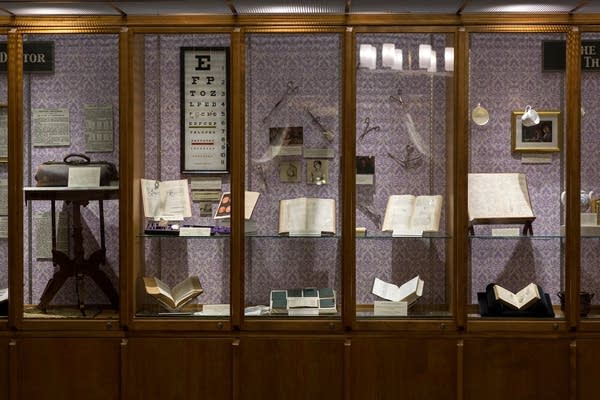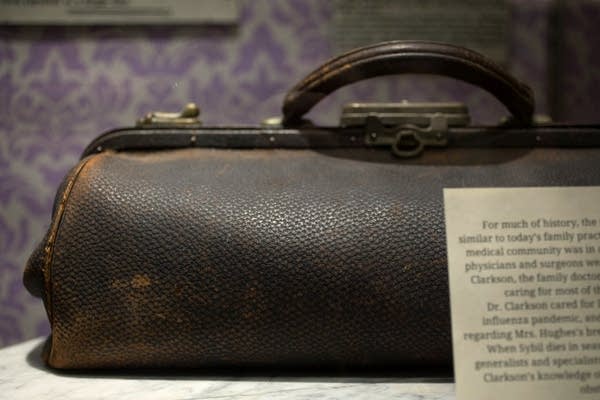'Downton Abbey' gets a U of M medical check up

Go Deeper.
Create an account or log in to save stories.
Like this?
Thanks for liking this story! We have added it to a list of your favorite stories.
There are plenty of television medical dramas on the air these days. But when the Wangensteen Historical Library at the University of Minnesota picked a TV show for the subject of their newest exhibit of medical books and artifacts, they didn't choose a hospital drama.
They chose Downton Abbey, the British period drama broadcast on PBS. The soapy show deals in broken hearts, inheritance issues, and class distinctions — but there are also several medical themes threaded throughout the popular show.
Jon Hallberg, assistant professor at the University of Minnesota and MPR medical commentator, went to the exhibit to see how realistic the medical scenes in Downtown Abbey really are.

One of the display cases shows pictures of convalescent castles, reminding viewers that for the entire second season, Downton Abbey became a convalescent home for returning soldiers.
Turn Up Your Support
MPR News helps you turn down the noise and build shared understanding. Turn up your support for this public resource and keep trusted journalism accessible to all.
Emily Hagens, one of the exhibit's curators said the practice was common.
"There just were not enough beds for all the soldiers who were coming home, so they needed to take the available space and shift it around so there was enough space for the soldiers," she said.

Hagens said these soldiers would have had adequate care because the homes weren't meant to be a hospital where intensive medical care was given, but a place the recovering soldiers could have basic assistance.
One of the exhibits deals with spinal injuries, which reminds viewers of Matthew Crawley. When the character recovered from an injury that confined him to a wheelchair, some viewers were skeptical. But Crawley's miraculous recovery could have happened, Hallberg said.
"Imagine the time. The extent of your technology is a reflex hammer and a few basic tools, which frankly we still use when we do a neurologic exam, and that's about where it would stop," he said.

Even an X-ray would only show if there was a fracture to the spinal column — not major swelling, he said.
"One could assume that over time it got better and better and the swelling went down, and eventually he regained the use of his legs," Hallberg said.
The exhibit also displays guidebooks on what to expect during pregnancy in the days of Downton Abbey, a painful reminder for some fans about how one beloved character died.

Lady Sybil's death from eclampsia shortly after giving birth to a daughter could have been prevented by checking her blood pressure or her urine for protein, Hallberg said.
"It's almost as simple as that. When you start to see a rise in the protein level or the blood pressure, you need to take this very seriously and in her case it reached through this critical phase," he said.
The exhibit also features cookbooks, surgical manuals and instruments, newspapers, photographs, drawings and other accessories from Edwardian England that give insight into 19th and 20th century medicine.


